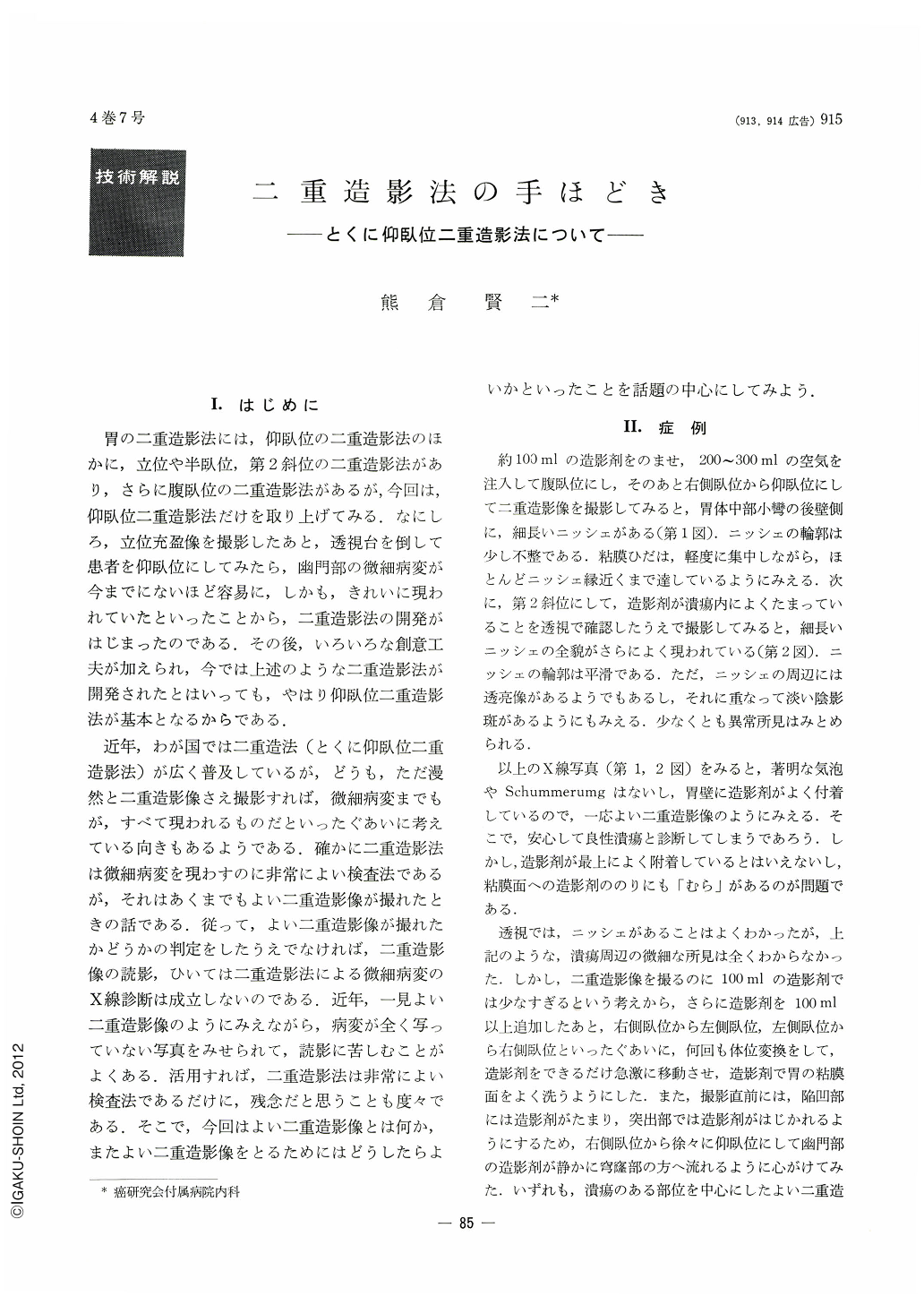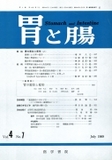Japanese
English
- 有料閲覧
- Abstract 文献概要
- 1ページ目 Look Inside
- サイト内被引用 Cited by
Ⅰ.はじめに
胃の二重造影法には,仰臥位の二重造影法のほかに,立位や半臥位,第2斜位の二重造影法があり,さらに腹臥位の二重造影法があるが,今回は,仰臥位二重造影法だけを取り上げてみる.なにしろ,立位充盈像を撮影したあと,透視台を倒して患者を仰臥位にしてみたら,幽門部の微細病変が今までにないほど容易に,しかも,きれいに現われていたといったことから,二重造影法の開発がはじまったのである.その後,いろいろな創意工夫が加えられ,今では上述のような二重造影法が開発されたとはいっても,やはり仰臥位二重造影法が基本となるからである.
近年,わが国では二重造法(とくに仰臥位二重造影法)が広く普及しているが,どうも,ただ漫然と二重造影像さえ撮影すれば,微細病変までもが,すべて現われるものだといったぐあいに考えている向きもあるようである.確かに二重造影法は微細病変を現わすのに非常によい検査法であるが,それはあくまでもよい二重造影像が撮れたときの話である.従って,よい二重造影像が撮れたかどうかの判定をしたうえでなければ,二重造影像の読影,ひいては二重造影法による微細病変のX線診断は成立しないのである.近年,一見よい二重造影像のようにみえながら,病変が全く写っていない写真をみせられて,読影に苦しむことがよくある.活用すれば,二重造影法は非常によい検査法であるだけに,残念だと思うことも度々である.そこで,今回はよい二重造影像とは何か,またよい二重造影像をとるためにはどうしたらよいかといったことを話題の中心にしてみよう.
Considerations are laid in this paper on basic principles of double contrast method in the supine position.
This method, now making it possible to detect a most minute lesion of the stomach, has one prerequisite, that is, the ability of the examiner to take a satisfactory double contrast picture. Popularization of this method on the other hand gave rise to a perfunctory attitude toward the evaluation of radiographs taken by this method. There have been increasing numbers of double contrast radiograph in which its drawback for interpretation of gastric lesions is more conspicuous.
Theoretically a good double contrast radiograph is one that visualizes exactly what can be observed macroscopically, or exact finding of gross pathology must be reflected on it. Technically a good double contrast radiograph must have following requisites; good coating of contrast meal on the mucosa without air bubbles or congelation; minimum influence of gastric juice and mucus; and moreover, contrast medium must be accumulated in depressions and it must be shed over protuberances.
For taking a good double contrast film, therefore, following points are of major importance,
1) The amount of barium and air should each be from 200 to 300 ml, at most from 500 to 600 ml respectively.
2) The surface of the mucosa must be cleaned off by frequent postural changes so that contrast medium might be accumulated in depressed areas and shed over protuberances.
3) The shadow of the duodenal cap or vertebrae should not be superimposed on that of a lesion.

Copyright © 1969, Igaku-Shoin Ltd. All rights reserved.


